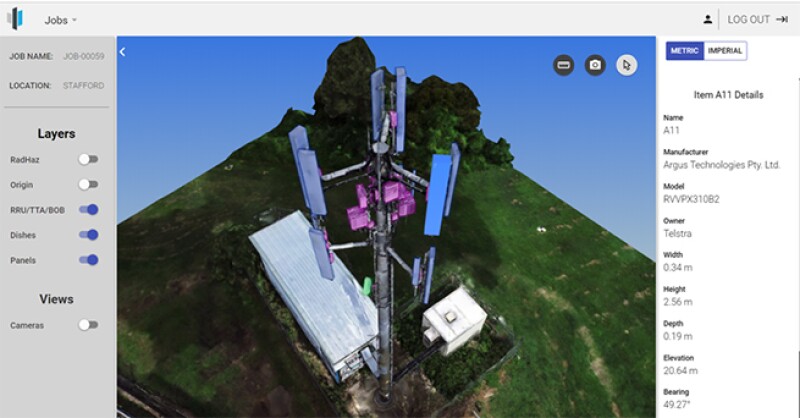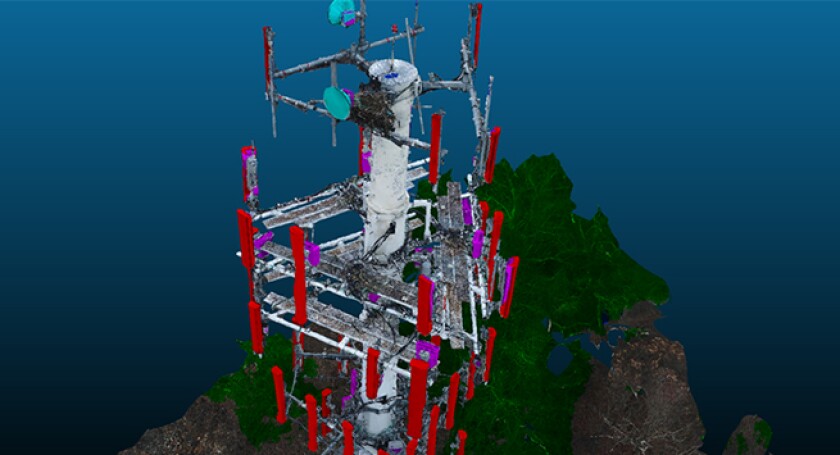Three years ago, Australian start-up SiteSee developed a solution to evaluate tower equipment radiation using drones. After testing it in the United States, the company realised that their initial idea could be turned into a more sophisticated and complete site survey system using Artificial Intelligence. After working with Telstra and other tower owners globally, Sitesee continues expanding an AI solution that provides 3D imagery and helps towercos to inspect towers more efficiently, providing accurate information that ultimately translates into cost reduction and generates new revenues. TowerXchange sat down with SiteSee’s CEO and Co-Founder Lucio Piccoli to hear about the company’s evolution and the benefits that AI is bringing to towercos and MNOs across the globe.
TowerXchange: Can you please introduce SiteSee and share your journey with our readers?
Lucio Piccoli, CEO & Co-Founder, SiteSee:
SiteSee’s journey started three years ago as a start-up business in Brisbane, Australia. Initially, Artificial Intelligence (AI) was not the original focus of the business. Instead, we were focusing on visualisation and radiation hazard (Radhaz) estimation of cell tower equipment.
After developing the world’s ?rst Level of Detail (LOD) web-based 3D viewer in 2016, we also developed a Radiation Hazard Analysis (RadHaz) simulation tool for antennas and formulated a repeatable drone-captured images process, which we trialled it in the U.S. market with very little interest. The feedback we received from the U.S. trial pushed us to create an automated audit and assessment system using Arti?cial Intelligence, hence we pivoted into an AI start-up. The move made sense for us, since we already had lots of data and detailed 3D expertise. Given the commodity nature of cloud computing, AI frameworks and the business benefits that AI is delivering to towercos, SiteSee has seen rapid market penetration not just in Australia but also across the U.S., the United Kingdom and Southeast Asia.
TowerXchange: AI integration is a revolutionary element for towercos and MNOs. Could you explain how Sitesee’s process work?
Lucio Piccoli, CEO & Co-Founder, SiteSee:
The workflow is end to end, starting with the drone data capture. We provide an programmed drone mission planner that allows customers to capture images automatically. The images are then uploaded to the SiteSee cloud, where the intense computation workflow commences. These workflows include 3D reality model generation and AI for equipment identification and corrosion. Then, we do the final deployment to the web portal via a fully automated process.

TowerXchange: What are the three main challenges that you are helping towercos and MNOs to solve?
Lucio Piccoli, CEO & Co-Founder, SiteSee:
Missed revenue, incorrect tower load and high maintenance cost are the three main challenges that we always hear from towercos. All three problems can be solved through accurate, low-cost audits as they are critical for billing, engineering and maintenance operations. Missed revenue opportunities are quickly solved by the automated equipment audit which identifies all equipment on the towers and ensures an accurate MNO billing process.
On the structural side, inaccurate tower loading makes engineering teams nervous and cautious. Having accurate equipment dimension and positions in 3D helps companies to confidently predict tower loading which is a safety matter, first and foremost. This accuracy helps towercos to identify unused space, which is particularly crucial in preparation for 5G.
Finally, tower maintenance will never be replaced by drones, but it can be optimised by providing accurate corrosion classification and identification. The corrosion audit allows for desktop reviews and comparisons over time of corrosion behaviour.
TowerXchange: SiteSee started in Australia but has since expanded its operations from India to the U.S. Could you tell us more about your global footprint and what are some of the key differences between the various markets you serve?
Lucio Piccoli, CEO & Co-Founder, SiteSee:
After speaking with tower operators in the U.S., UK, India and Australia, it became very evident to us that global towercos and MNOs work in a rather similar manner when it comes to their tower and asset management. At the end of the day, they all want to know what is installed on each of their towers.
In Asia, our main challenge relates to pricing and the comparison with the low cost of human audit procedures currently in use. Our relatively high price point was a major barrier in the adoption of our advanced technology but this is finally changing, as customers are focusing more on value rather than cost.
By adopting our solution, they are now able to make reliable decisions on how to upgrade their sites to 5G. In fact, tower upgrades require accurate information on every site and what’s installed on each of them. SiteSee is able to provide that level of details and allow its clients to plan accordingly.
TowerXchange: What is unique about your solution in comparison to its competitors?
Lucio Piccoli, CEO & Co-Founder, SiteSee:
The unique capability of the SiteSee solution can be simply summarised. We are the world’s first Artificial Intelligent cell tower equipment audit service. We have patents for our Face-Map algorithm that results in 2D to 3D classi?cation. This patent harnesses the power of drones and AI to create an automated solution to provide insights to towercos while also reducing the human intervention required to manage a large portfolio of towers and millions of billable assets.
TowerXchange: Who are some of your main clients? Can you share some success stories?
Lucio Piccoli, CEO & Co-Founder, SiteSee:
We provide services mainly to towercos but we also have some MNO clients. We have successfully collaborated with Australian operator Telstra, helping the company to identify important antenna installation anomalies thanks to our AI report, which ultimately generated considerable cost reductions.
The key takeaway from this collaboration was the need for Telstra to move to annual tower audits instead of the industry standard of two to five years audit program. The current manual audit process has too much friction as it has become very evident that automation is key to annual portfolio audit scalability, which is delivered through SiteSee’s automated AI.
SiteSee is currently performing a large-scale audit for a UK-based towerco with complex equipment deployments. The SiteSee solution is providing the information for the “equipment realignment project” of the towerco asset database. The driver is to provide greater revenue from identification of incorrect billing while unlocking tower capability. The program is not yet complete but the results are already providing insights that the engineering and billing teams have been eager to analyse for years.

